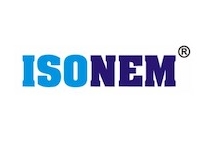MK - 1080 WIRELESS MEASUREMENT
What does it do?
Wireless measurement systems are measurement systems designed to collect and transfer data using a wireless communication protocol. These systems are often used in places that are remotely accessible or difficult to access, and are preferred in environments that make the use of wired measurement systems difficult.
Wireless measurement systems use one or more sensors to collect measurement data, and these sensors usually include a processor, a data storage device and a wireless communication module. When the sensors collect data, the processor processes and stores the data on the data storage device and sends the data wirelessly to a receiver or data acquisition system via the wireless communication module.
Wireless measurement systems perform data transmission using wireless communication technologies such as radio frequency (RF) or Bluetooth. Data transmission is performed through a series of wireless devices, from sensors to the data acquisition device, then from the data acquisition device to the data visualization software or analysis tool.
Wireless measurement systems are used in industrial, medical, environmental and many other fields. For example, a wireless measurement system can monitor the performance of a production line by collecting measured data from many points in a factory.
How is it used?
(Example 1)
Wireless measurement systems require installation before they can be used. Typically, wireless sensors are placed inside the tank and connected to a device such as a data acquisition device, computer or mobile device. This connection is usually realized through wireless connection technology, Wi-Fi or Bluetooth.
The sensors make temperature, level or other measurements inside the tank and send the data wirelessly to the data collection device. The frequency with which data is sent can be adjusted depending on the nature of the measurement and the requirements. For example, variables such as temperature can be measured more frequently, while slower variables such as level can be measured less frequently.
The data acquisition device records the data and can be analyzed over a period of time. The analysis can be used to create an action plan based on the measured data or to evaluate the results against a specific criterion or standard.
Wireless measurement systems can use many types of sensors to make measurements. For example, many types of sensors can be used to make temperature measurements, such as thermometers or thermal cameras, ultrasonic sensors or pressure sensors to make level measurements.
Wireless measurement systems are used in many industries. For example, they are used in the chemical industry, food industry, water treatment plants, oil industry and many other industries. By making continuous and accurate measurements, wireless measurement systems can help to make production processes more efficient, reduce costs and improve quality.
(Example 2)
Level and temperature measurement of tanks can be easily done with wireless metering systems. Wireless metering systems measure variables such as level and temperature inside the tank using one or more sensors. The sensors send data to a data acquisition device using wireless connection technology. These devices record and can analyze the measured data.
Wireless level measurement systems measure the liquid level inside the tank using ultrasonic sensors, pressure sensors or magnetic field sensors. Ultrasonic sensors measure the level using the reflection of sound waves sent from the top of the tank. Pressure sensors are placed at the bottom or side of the tank and measure the pressure inside the tank. Magnetic field sensors are placed on the side of the tank and measure magnetic field changes relative to the liquid level.
Wireless temperature measurement systems measure temperature using sensors such as thermometers or thermal cameras. Thermometers are placed inside the tank to directly measure the temperature of the liquid. Thermal cameras measure temperature by creating a temperature map from outside the tank.
Wireless measurement systems can record the measured data and analyze it over a period of time. The analysis can be used to create an action plan based on the measured data or to evaluate the results against a specific criterion or standard. In this way, it may be possible to make production processes more efficient, reduce costs and improve quality.
Technical Specifications
Sensor type | Wireless measurement systems can use different sensors. Ultrasonic, magnetic field and pressure sensors can be used for level measurement, while thermometers and thermal cameras can be used for temperature measurement. |
Measurement range | The measurement range specifies the minimum and maximum limit over which the sensor can measure. For example, a temperature sensor can measure temperatures from -50°C to 150°C. Precision refers to how accurately the sensor can measure the measured variable. Precision is usually expressed as a percentage of the measurement range. For example, a temperature sensor can have a precision of +/- 0.5°C. |
Sensitivity | Resolution refers to the smallest change that the sensor can measure. For example, a temperature sensor can have a resolution of 0.1°C. |
Resolution | The data transfer rate specifies how many seconds it takes to transfer data from the sensor to the data acquisition device. |
Data transfer rate | The data acquisition device can record and analyze the measured data. Specifications such as storage capacity, battery life and wireless connection technology may vary by device. |
Data acquisition device specifications | Wireless measurement systems can take different security measures to ensure the safety of the measured data. For example, encrypting the data or allowing access only to authorized persons. |
Safety features | Measurement accuracy refers to how accurately the sensor can measure variables between the minimum and maximum limit of what it can measure. For example, a magnetic field sensor can measure with an accuracy of ±0.5%. |
Measurement accuracy | Wireless measurement systems can operate within a specific temperature range. This range is especially important in industrial applications because temperatures can be very high or very low. |
Operating temperature range | Wireless measurement systems can have different mounting types. For example, magnetic field sensors can be mounted on the outside surface of the tank, while ultrasonic sensors can be placed inside the tank. |
Mounting type | Wireless measurement systems can use different communication protocols for data transmission. Protocols such as Wi-Fi, Bluetooth or LoRaWAN are commonly used examples. |
Communication protocol | Calibration of the sensors is important to ensure accurate measurements. Wireless measurement systems can use different methods for calibration. For example, a temperature sensor can be calibrated using ice water and boiling water. |
Calibration | Wireless measurement systems can use different sensors. Ultrasonic, magnetic field and pressure sensors can be used for level measurement, while thermometers and thermal cameras can be used for temperature measurement. |
Benefits Provided
- Wireless measurement systems offer many advantages over traditional wired measurement systems:
- Unlike wired systems, wireless measurement systems eliminate the need to pull cables, thus requiring less labor, time and cost.
- The fact that the sensors are wireless provides more flexibility for placement and transportation of the sensors. This means that measuring points can be changed more quickly and easily.
- Wireless measurement systems can receive and analyze data in real time. This can be used to quickly detect and respond to operational errors.
- Wireless measurement systems can be used for many types of sensors. For example, magnetic field sensors, ultrasonic sensors and temperature sensors can be used wirelessly.
- Wireless measurement systems can be used securely. Data can be protected by encryption and other security measures.
These advantages are some of the reasons why wireless measurement systems are becoming increasingly popular in industrial applications.
Areas of Use
Wireless measurement systems can be used in a variety of industries and application areas. Some application areas include:
Oil and gas industry: It can be used for level and temperature measurement of catalyst tanks, fuel tanks, pipelines and other equipment.
Food and beverage industry: It can be used for monitoring parameters such as level, pressure, temperature and pH of liquids.
Chemical industry: It can be used for level, temperature and pressure control of chemical reactions.
Energy industry: It can be used to monitor the performance of renewable energy sources such as solar panels, wind turbines and hydropower plants.
Construction industry: It can be used for temperature, humidity and pressure measurements of structures.
Automotive industry: It can be used to monitor parameters such as air quality, vibration and performance of vehicles.
Healthcare industry: It can be used for level, temperature and pressure measurements of hospital equipment, medical gases and other medical supplies.
Wireless measurement systems can be used in many industries and application areas and have a wide range of applications thanks to their ability to measure with different sensors.
















































